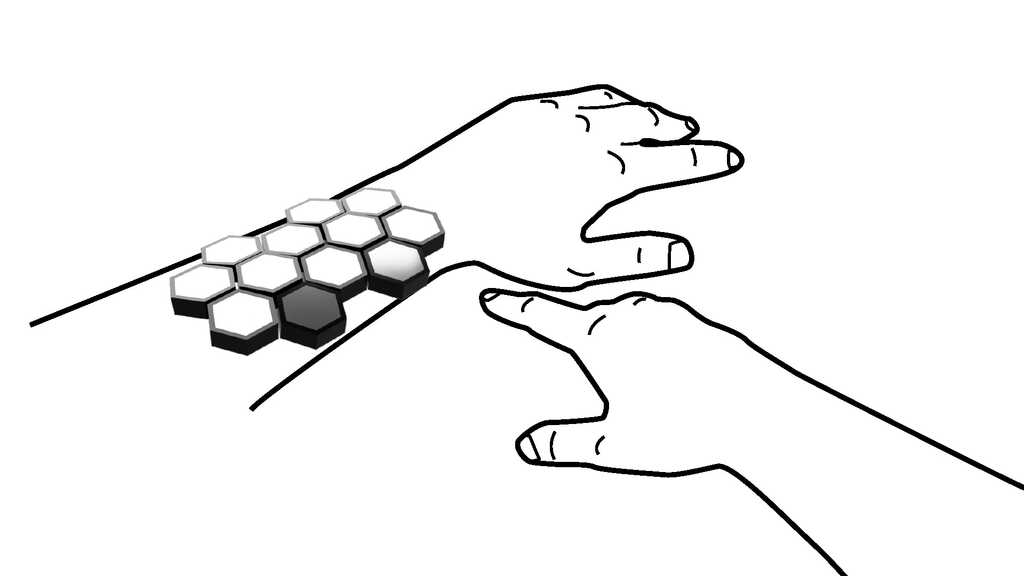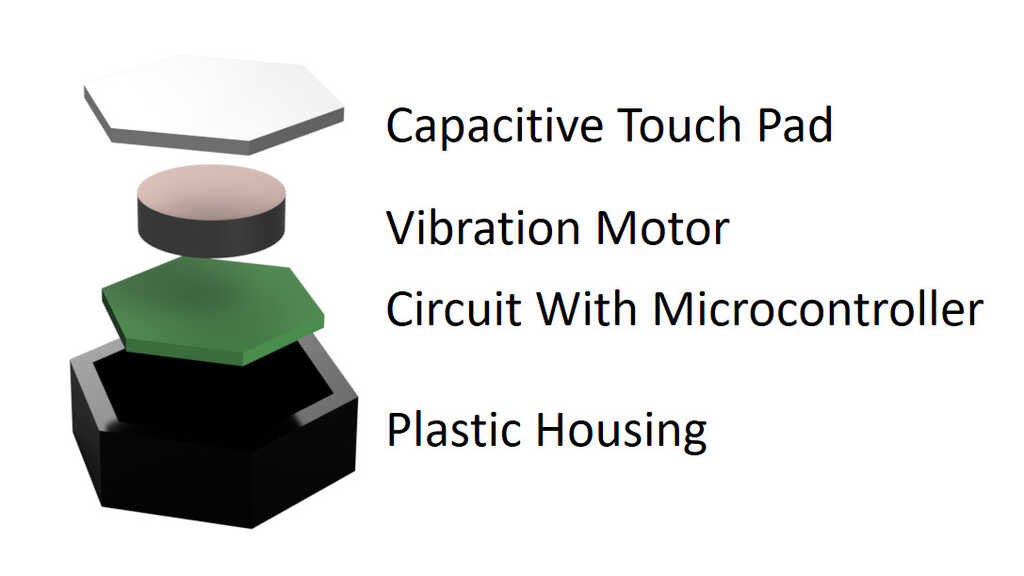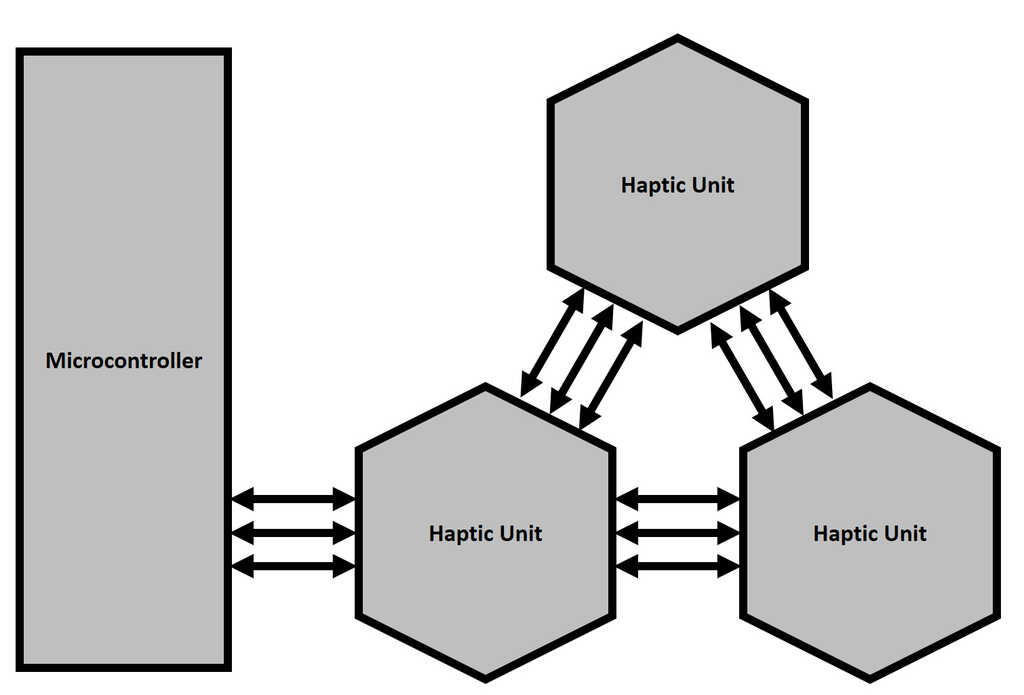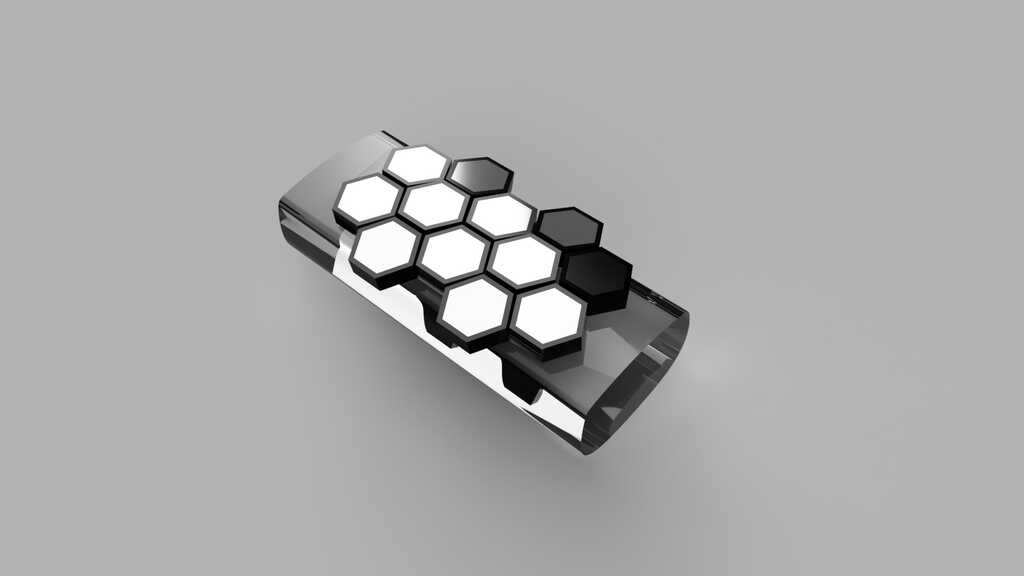I'm a fan of VR and haptics. There's something about the idea of being able to create and fully immerse yourself into a world that seems so tantilizing. There are so many things that are impossible in reality that could be experienced in a virtual environment.
There's excitement from an entertainment perspective, and there's an entire realm of possibilities for useful applications, too. Ranging from safe training for dangerous situations to "immersive" rehabilitation, there's so much potential for this technology to grow.
At the moment, I'm thinking about designing a modular haptic system. The idea is that you have individual modules that each provide haptic sensation to a point on the body. For the scope of the class, just enough to cover a bit of the arm would be sufficient. Located on the wrist, it could be interesting to add capacitive touch for input as well.

The rotoscope here is to-scale, with some dimensions restricted by different components:

The Vibration Motor:
The vibration motor would provide the haptic feedback. However, even the smallest sizes are quite large. One option for scaling down is switching to something like Electrotactile Feedback. While this is something I'm definitely interested in, I'm not sure I'd have the appropriate resources to implement this both safely and convincingly.
Capacitive Touch Pad:
The capacitive touch pad would just be a way for the user to provide feedback. For example, the user receives haptic sensation based on a notification they received, and then they can touch the modules to clear it or pull it up on a device.
Plastic Housing
While not necessarily plastic, the housing is designed with a hexagonal shape only because it seems more futuristic. Realistically, it may be simpler to implement in a rectangular shape.
Circuit with Microcontroller
Each module would have its own microcontroller. This is necessary to connect large numbers of modules together. The idea is that there's one master microcontroller, that handles all of the communication between the modules. The details of how messages get sent/received/passed around can be figured out later, but the general data flow looks like this:




